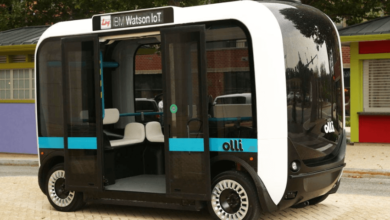Technologies in Renewable Energy Storage

Renewable energy has emerged as a cornerstone of sustainable development, offering clean and abundant alternatives to fossil fuels. However, the intermittent nature of renewable sources like solar and wind energy presents a significant challenge for consistent power supply. This challenge has fueled the development of advanced energy storage technologies, which play a crucial role in ensuring the reliability, efficiency, and scalability of renewable energy systems.
The Importance of Energy Storage in Renewable Energy Systems
Energy storage technologies bridge the gap between energy generation and consumption, ensuring that power is available when and where it is needed. Solar energy is generated during the day, while wind energy is often strongest at night. Without effective storage solutions, excess energy during peak production times could go to waste, and shortages may occur during low production periods. Energy storage systems (ESS) address these issues by capturing surplus energy and releasing it during demand peaks, stabilizing the grid and improving the overall efficiency of renewable energy systems.
Battery Storage Technologies
Batteries are among the most widely used and rapidly advancing energy storage solutions. Lithium-ion batteries, known for their high energy density and efficiency, dominate the market. These batteries are used in various applications, from residential solar systems to large-scale grid storage. Recent advancements in solid-state battery technology promise even greater safety, longevity, and energy capacity, making them a potential game-changer for renewable energy storage. Beyond lithium-ion, other battery types like flow batteries offer unique advantages. Flow batteries, such as vanadium redox batteries, store energy in liquid electrolytes, allowing for scalable storage capacity and extended lifespans. These batteries are particularly well-suited for large-scale energy storage projects.
Pumped Hydroelectric Storage
Pumped hydroelectric storage is one of the oldest and most established energy storage technologies. It involves pumping water from a lower reservoir to an upper reservoir during periods of excess energy generation. When energy demand increases, the stored water is released back down through turbines to generate electricity. This system offers large-scale storage capacity and high efficiency, making it an essential component of renewable energy infrastructure. However, its reliance on specific geographic features, such as elevation differences and access to water resources, limits its widespread deployment.
Compressed Air Energy Storage (CAES)
Compressed air energy storage systems work by compressing air and storing it in underground caverns or tanks during periods of excess energy production. When demand rises, the compressed air is released, heated, and used to drive turbines that generate electricity. CAES systems can store vast amounts of energy and are particularly effective in stabilizing the grid. Innovations in isothermal CAES, which minimize energy loss during compression and expansion, are further enhancing the efficiency and feasibility of this technology.
Thermal Energy Storage
Thermal energy storage systems capture and store energy in the form of heat or cold, making them ideal for applications such as solar power plants and industrial processes. One common method involves using molten salt to store heat generated by concentrated solar power systems. The stored heat can then be used to produce steam and generate electricity, even after sunset. Ice-based thermal storage systems are another example, where excess electricity is used to freeze water at night, and the stored cold is used to cool buildings during the day. These systems provide cost-effective and environmentally friendly solutions for both power generation and temperature regulation.
Flywheel Energy Storage
Flywheels store energy by converting electrical energy into rotational kinetic energy. A high-speed rotor spins within a vacuum enclosure, and when energy is needed, the rotational energy is converted back into electricity. Flywheels are known for their rapid response times, long lifespans, and low maintenance requirements. While they are not typically used for long-term storage, they are ideal for applications requiring short-duration energy bursts and frequency regulation on the grid.
Hydrogen Storage
Hydrogen energy storage involves using surplus renewable energy to produce hydrogen through water electrolysis. The hydrogen can be stored and later converted back into electricity using fuel cells or turbines. This technology offers immense potential due to hydrogen’s high energy density and versatility. Beyond electricity generation, stored hydrogen can be used as a clean fuel for transportation, industrial processes, and heating. While the infrastructure for hydrogen storage and utilization is still developing, advancements in electrolyzer efficiency and hydrogen storage materials are paving the way for its broader adoption.
Supercapacitors
Supercapacitors are energy storage devices that store energy through electrostatic charges rather than chemical reactions. They excel in delivering rapid bursts of power and have long cycle lives. Although their energy density is lower compared to batteries, ongoing research into hybrid supercapacitors aims to combine the best features of batteries and supercapacitors. These systems are particularly useful in applications requiring quick energy delivery, such as grid stabilization and renewable energy integration.
Integration of Artificial Intelligence and IoT in Energy Storage
The integration of artificial intelligence (AI) and the Internet of Things (IoT) is transforming renewable energy storage. AI algorithms optimize energy storage by predicting demand, weather patterns, and renewable energy output, enabling efficient charging and discharging cycles. IoT-enabled storage systems provide real-time monitoring and control, enhancing system reliability and reducing operational costs. Together, AI and IoT enable smart grid functionality, ensuring seamless integration of renewable energy sources with storage systems.
Challenges in Renewable Energy Storage Technologies
Despite significant progress, several challenges remain in renewable energy storage. High upfront costs for advanced storage systems, such as lithium-ion batteries and hydrogen infrastructure, can deter adoption. Efficiency losses during energy conversion and storage, particularly in systems like CAES and thermal storage, also pose technical challenges. Additionally, the environmental impact of mining and recycling materials used in batteries, such as lithium and cobalt, highlights the need for sustainable resource management. Addressing these challenges requires ongoing research, innovation, and supportive policies to drive adoption and improve the sustainability of storage technologies.
The Future of Renewable Energy Storage
The future of renewable energy storage lies in the development of more efficient, affordable, and sustainable technologies. Solid-state batteries, advanced flow batteries, and green hydrogen production are expected to play significant roles in expanding storage capacity and reducing costs. Decentralized energy storage systems, where small-scale storage units are integrated with local renewable energy sources, will empower communities and reduce dependency on centralized grids. Furthermore, government incentives, industry partnerships, and international collaborations will drive advancements in renewable energy storage, ensuring a cleaner and more sustainable energy future.
Conclusion
Renewable energy storage technologies are the linchpin of a sustainable energy transition. By addressing the challenges of intermittency and grid stability, these innovations unlock the full potential of renewable energy sources. From batteries and hydrogen systems to AI-enabled smart grids, the advancements in energy storage are revolutionizing how energy is generated, stored, and consumed. As these technologies continue to evolve, they will not only enhance the viability of renewable energy but also pave the way for a cleaner, greener, and more resilient energy landscape.




